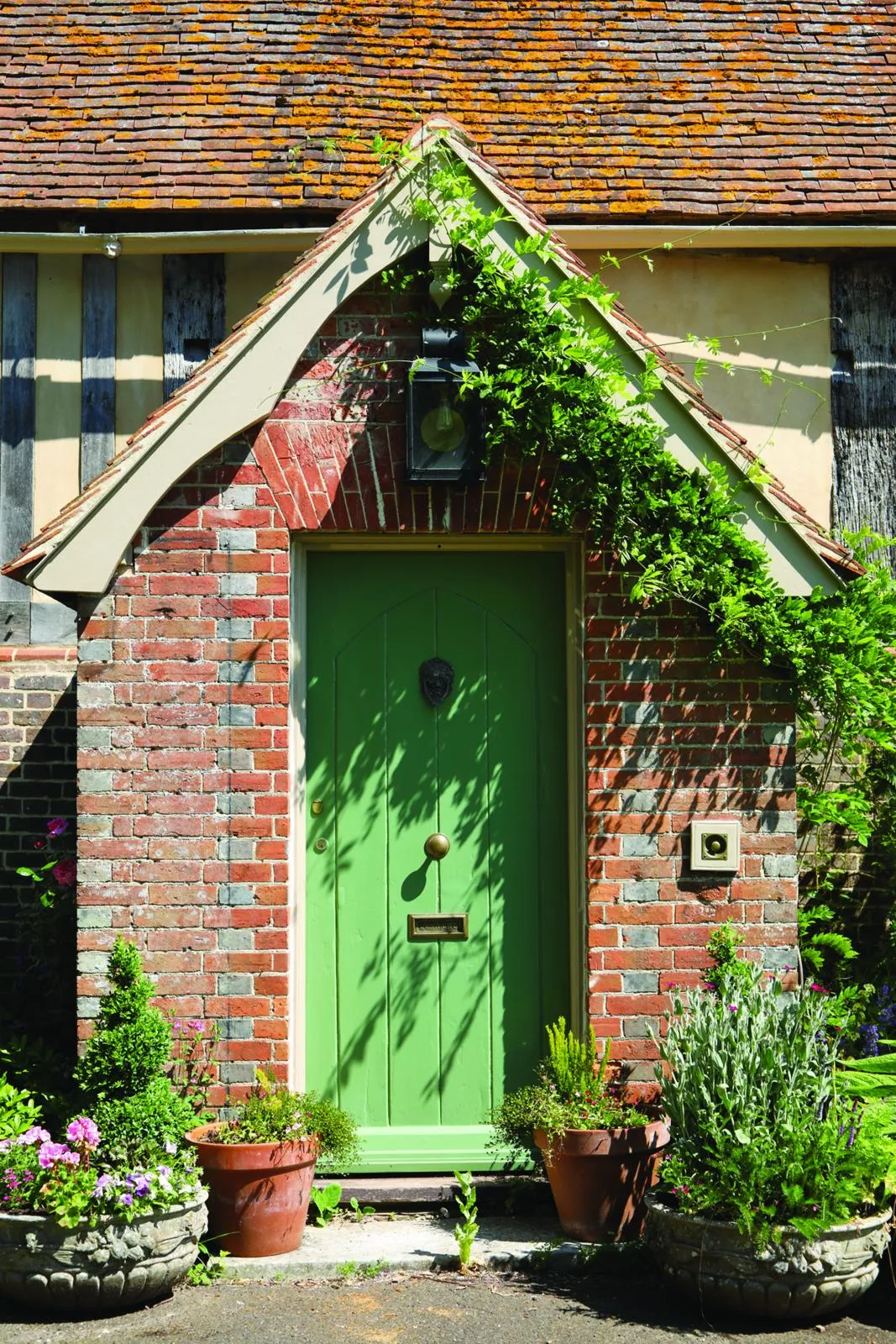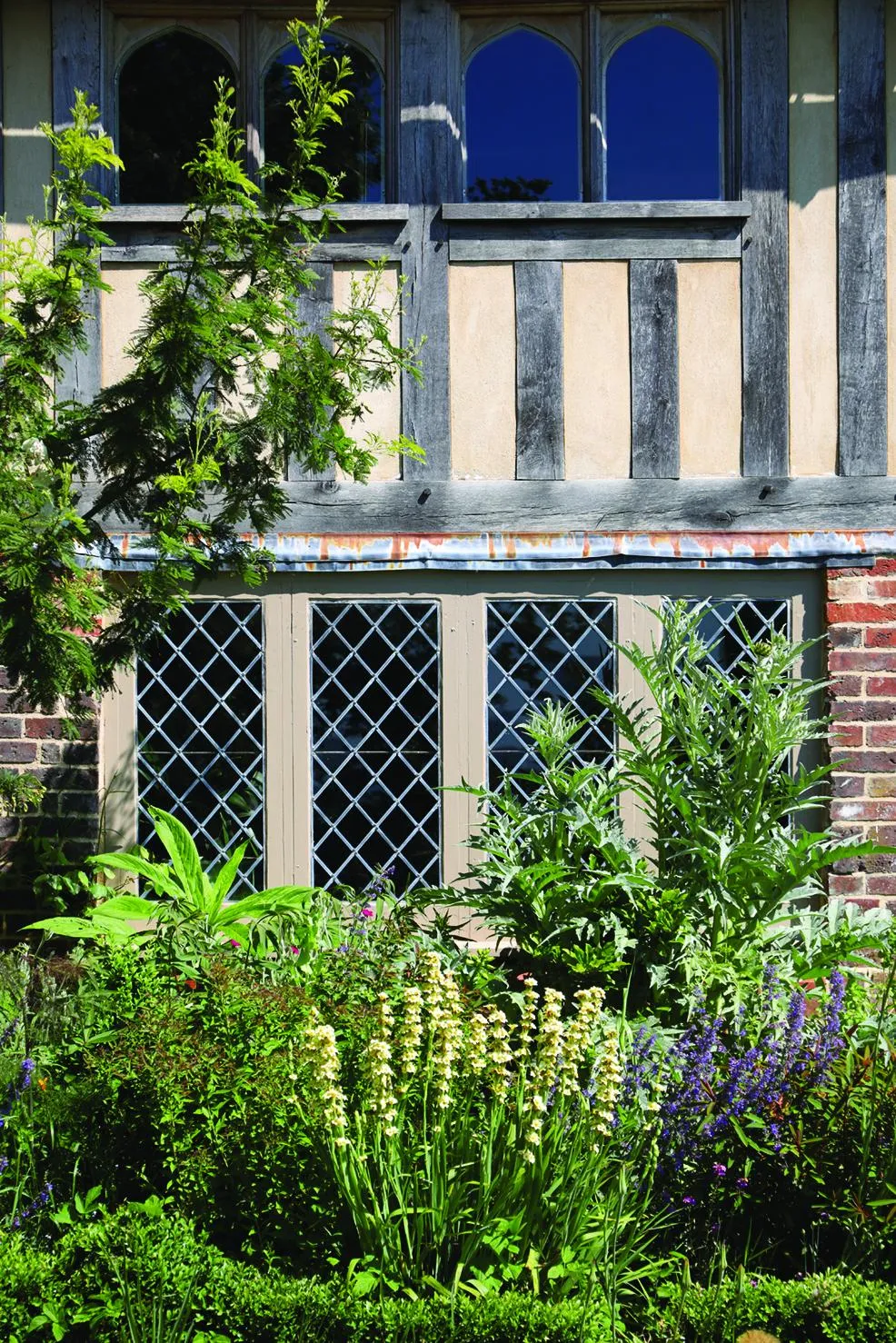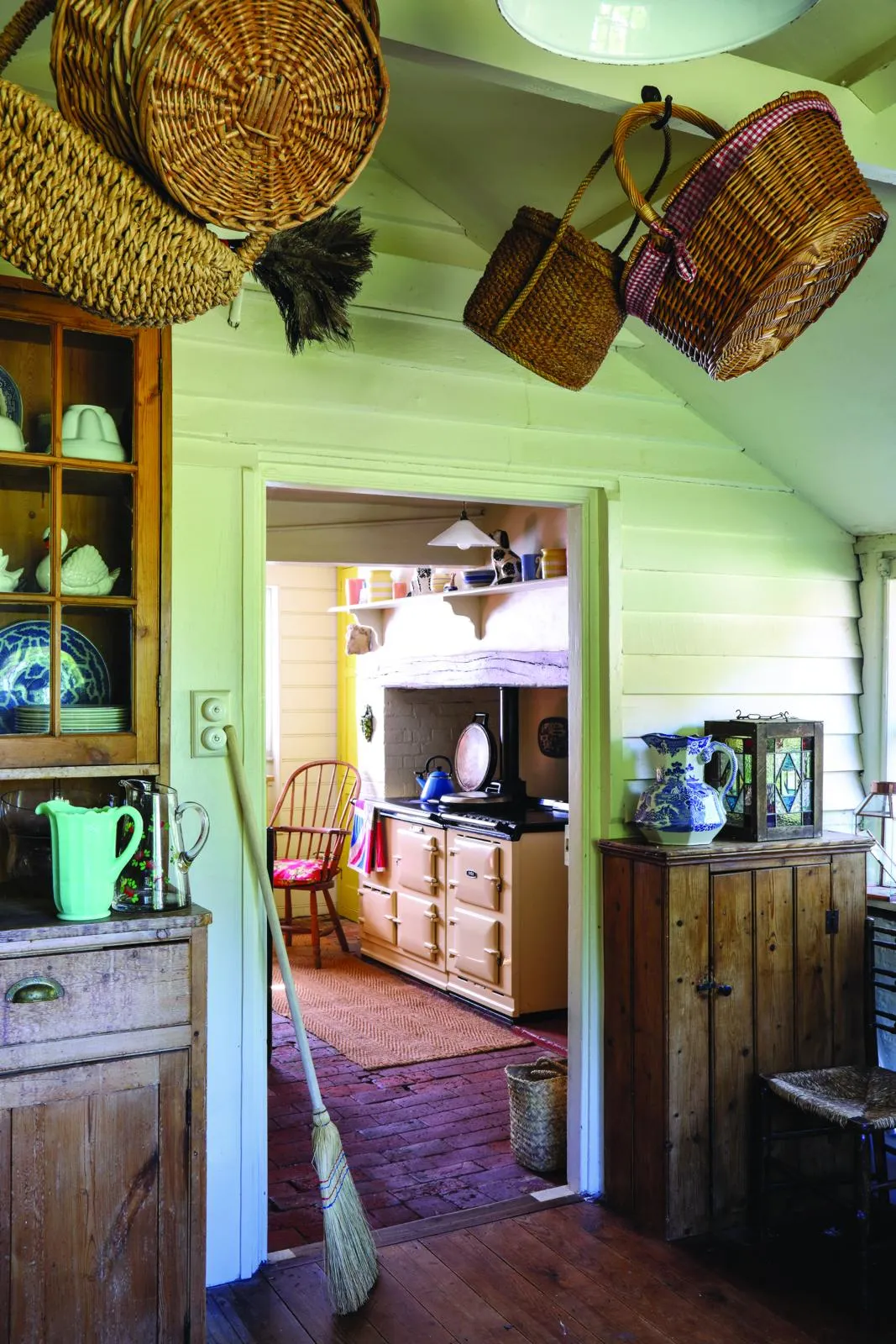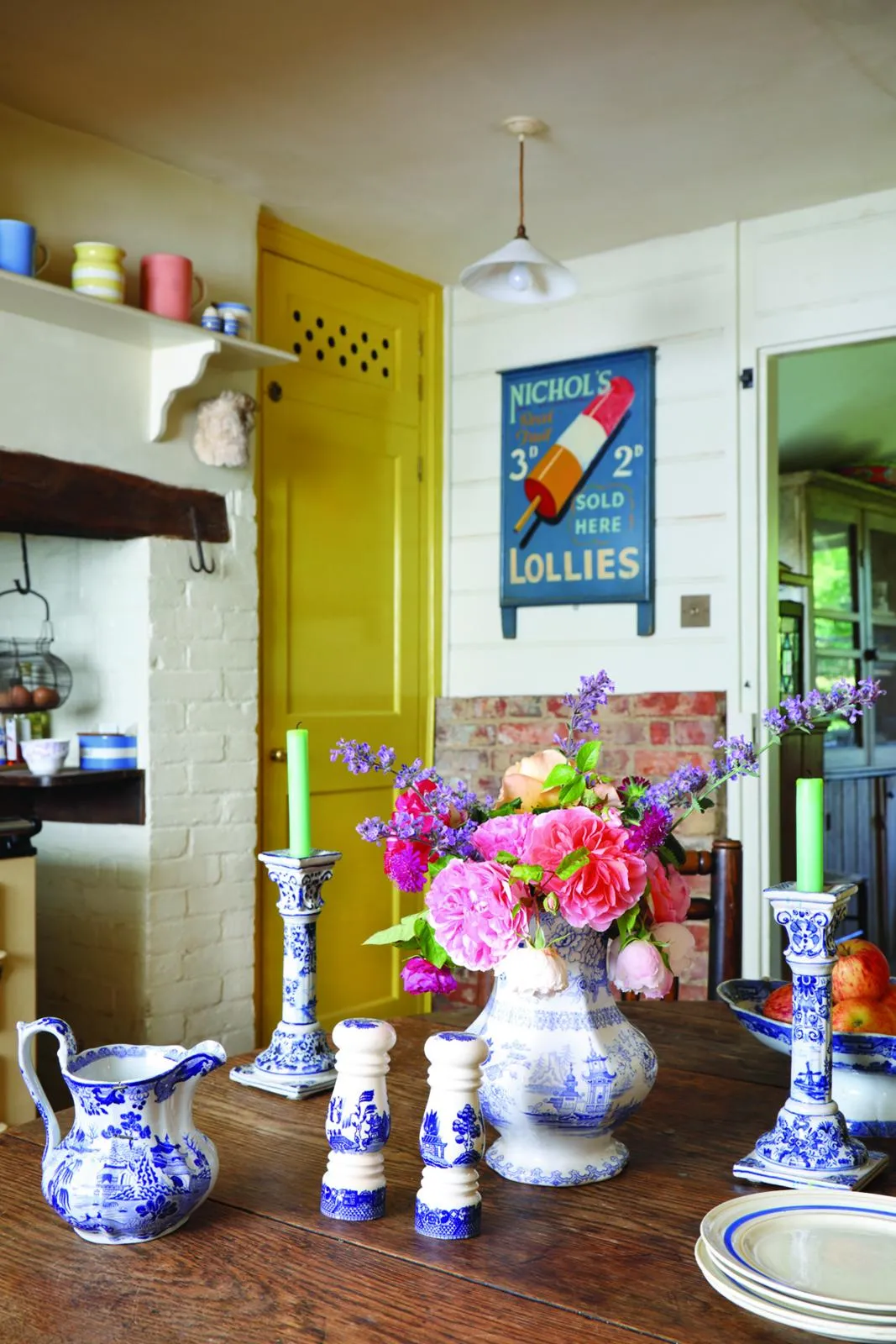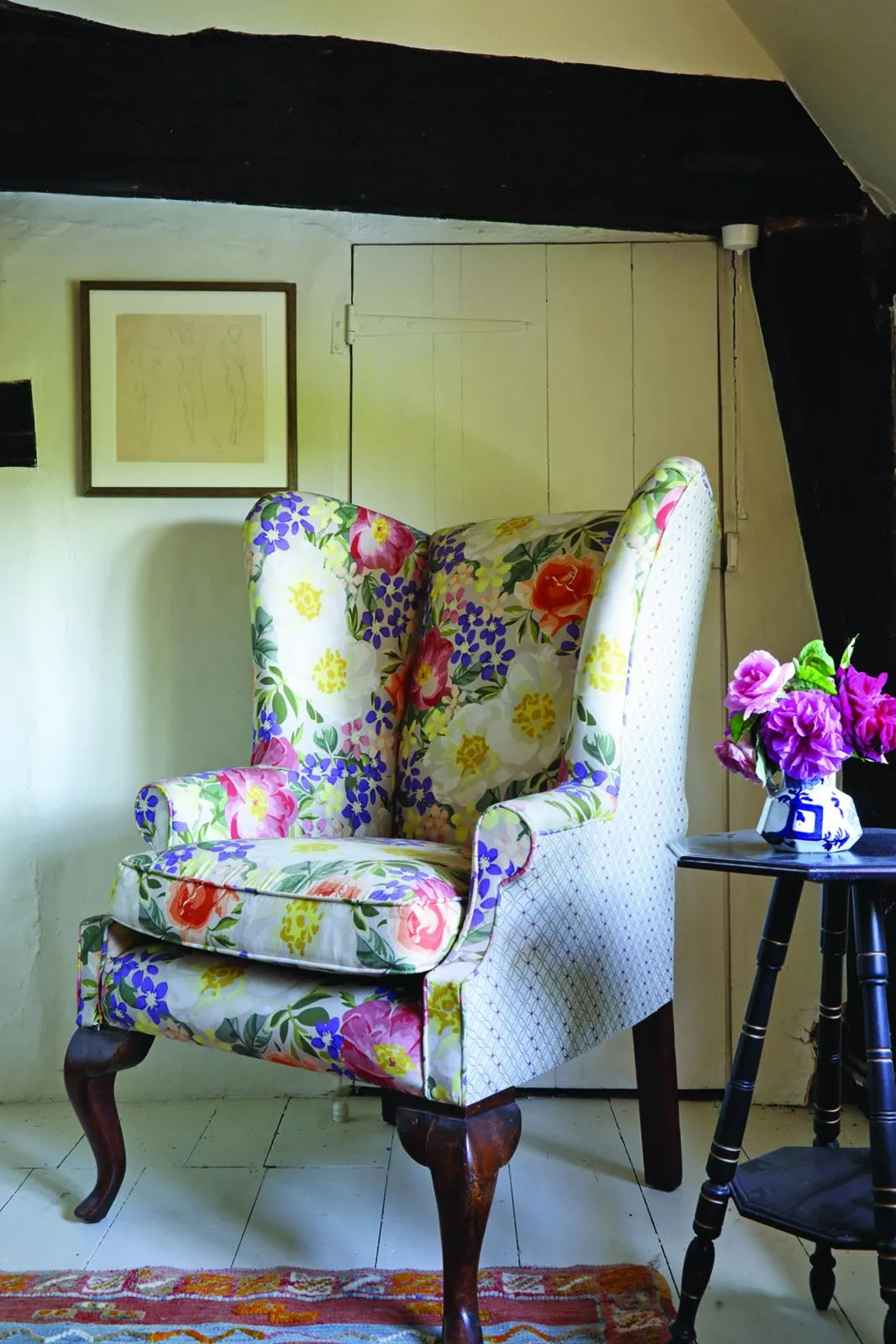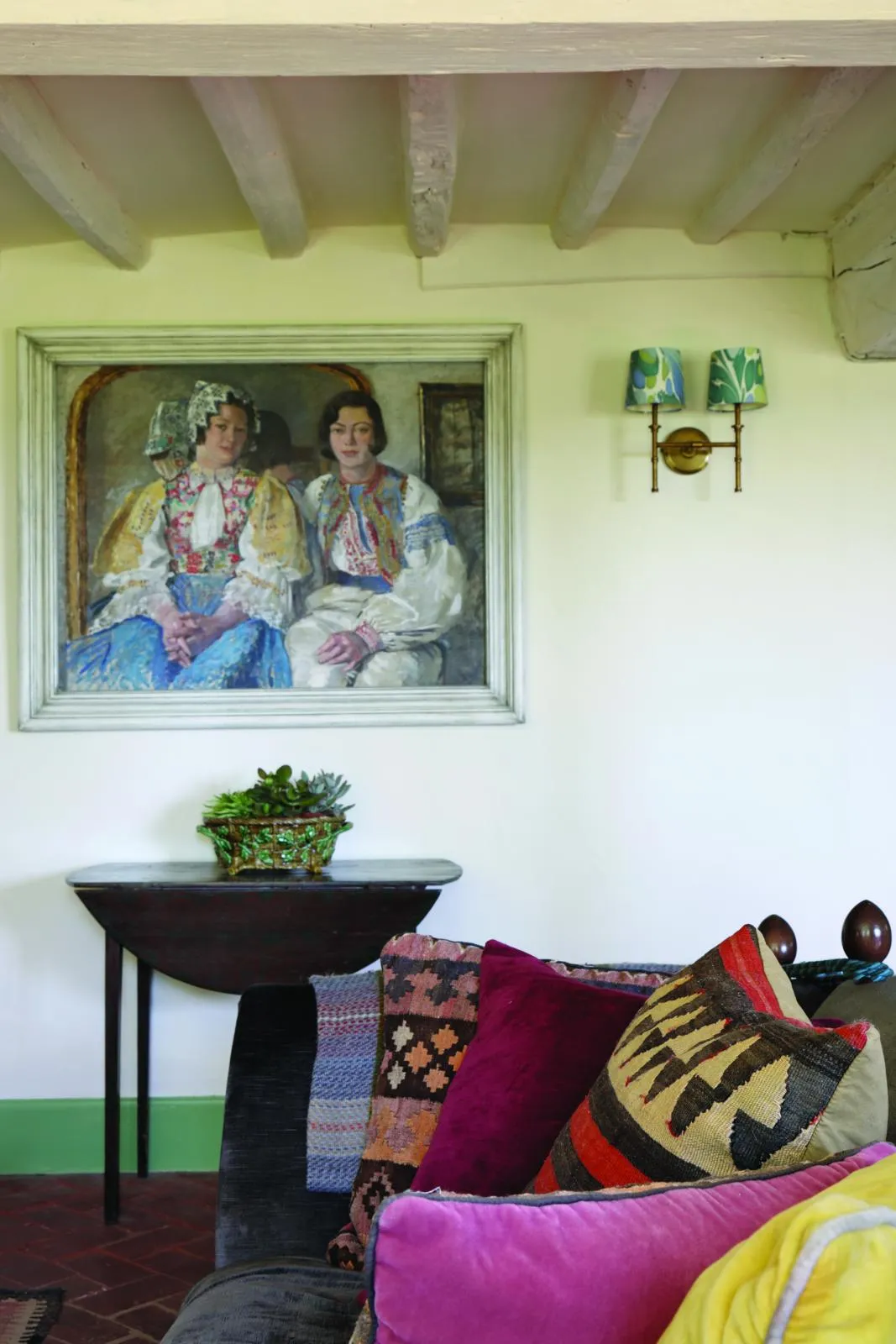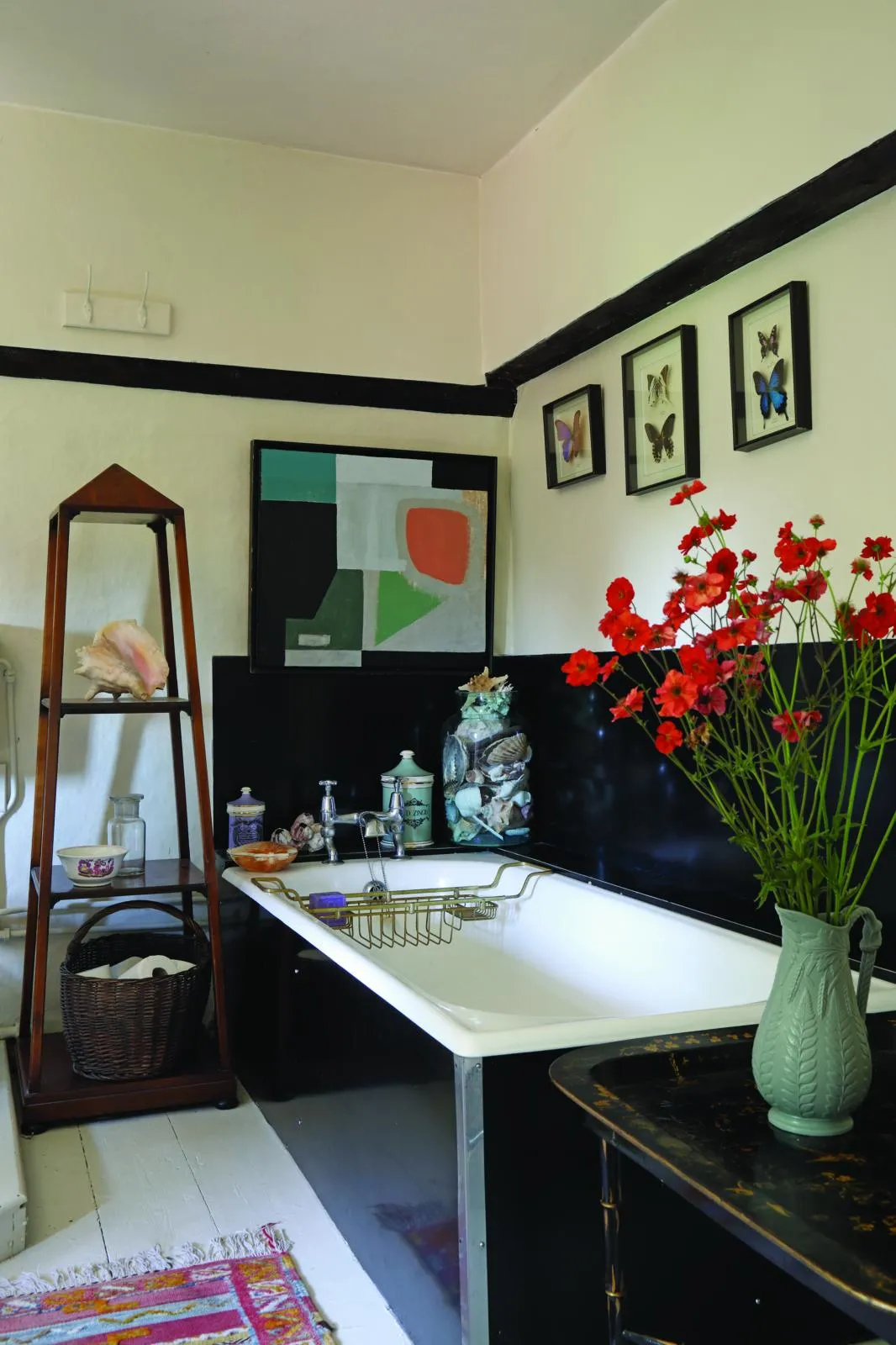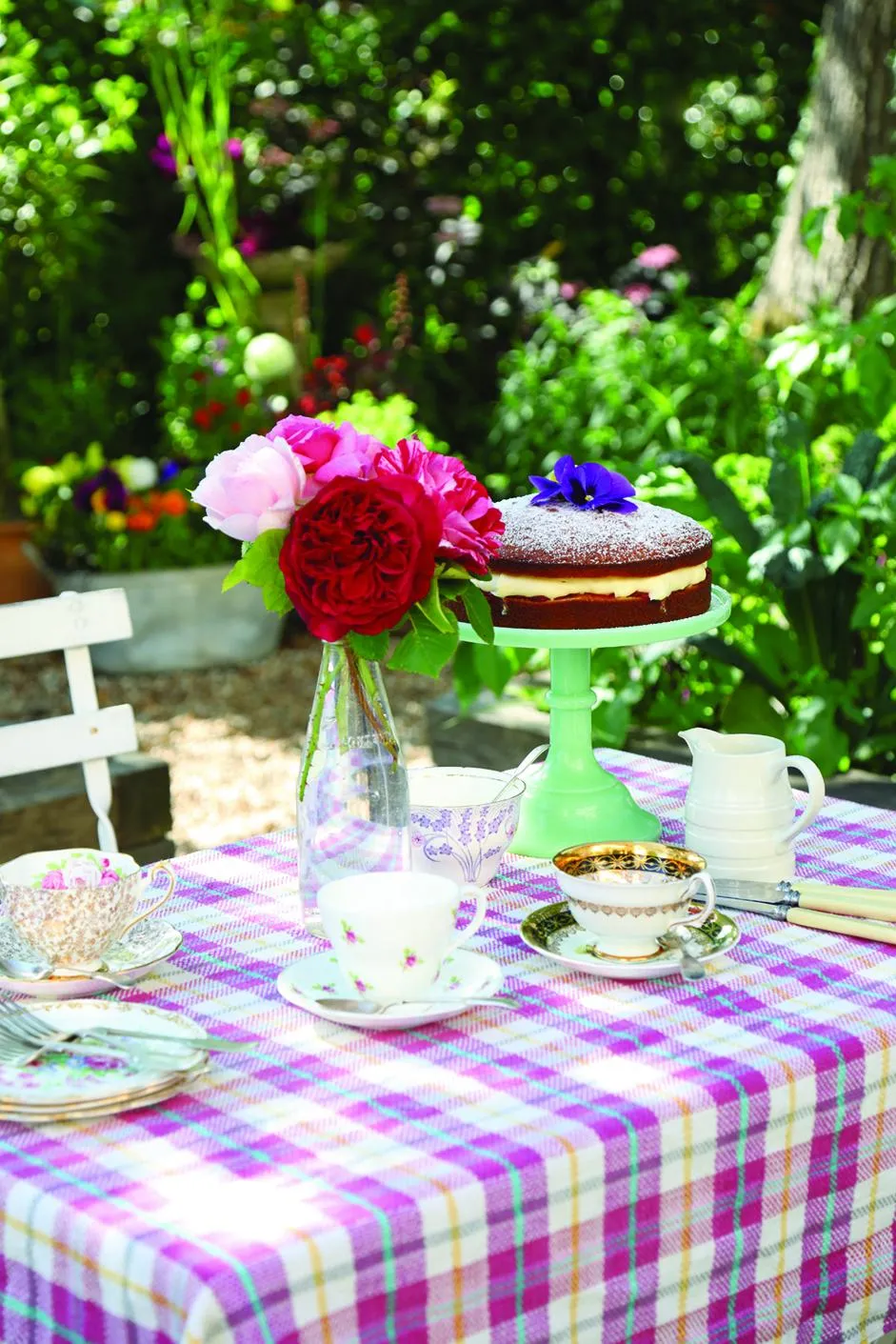Genevieve Harris was on her way to the shops when a sign caught her eye. Executing a tidy U-turn, she drove purposefully towards her new destination, a local car boot fair, as her children exchanged long-suffering glances. Once there, Genevieve disappeared into the bargain-savvy crowd; a tea dress-clad, heat-seeking missile on course for her target. Ten minutes later, she reappeared brandishing her motley booty: an Imari charger, Bakelite phone and Delft candlestick. As this ‘unabashed’ maximalist puts it: ‘I don’t stick to one style or era; it’s just about finding things that I like, something with soul.’
It was her unerring eye for ‘a diamond in the rough’ that led Genevieve to the home she shares with her husband and two children. Framed by three acres of tumbling East Sussex countryside, the beam-filled house dates back to the 15th century: ‘We knew it was a rarity,’ says Genevieve, an Anglophile Canadian, who moved to Britain in 2002.
The Grade II-listed property, near Rye, also proved to be a ‘huge undertaking’. In the 1960s its last owners, who were given the house as a wedding present by doting parents, subjected it to a brutal makeover. Original floors, ledge and brace doors and arrowhead windows were removed. Most shockingly, the wattle and daub façade was masked with concrete and painted to create a black and white Tudor-bethan effect.
Meanwhile, the rest of the house slid into a state of neglect. ‘In truth, it was falling down,’ recalls Genevieve. In her later years, the previous owner would drive to Rye in her Rolls Royce to buy a sack of bird feed every day. Dubbed the ‘bird lady’ by locals, the nature-loving widow allowed her ducks to wander, free range, inside the house. ‘We found evidence of their existence everywhere,’ says Genevieve.
You might also like a 19th-century farmhouse in the Somerset countryside
‘Looking back, I don’t think we’d ever take on anything like this again. At one point during the work there were no windows; the house was so damp that the children ran around in their wellies, which, of course, they loved. Thank goodness we were so naïve,’ continues Genevieve, a former retail manager for Alexander McQueen and Liberty. ‘But because it was such an overwhelming project, we love it even more.’
Genevieve whisks me off on a tour starting at the gabled porch, which leads to the huge lowceilinged sitting room with its wide inglenook fireplace and heavy beams. From its beginnings as a smoky medieval hall, built using clay dredged from the nearby pond, the house has grown organically over the centuries and the back of the property is an architectural mix of Georgian and Victorian additions.
The couple hired builders, Evans Conservation, who also work on National Trust properties, and they restored the building using authentic materials. ‘These structures are surprisingly simple. We were cheered when they told us there was nothing that couldn’t be mended.’ The wattle and daub was remixed and rotting woodwork replaced. For walls and beams they used a traditional lime-wash finish from Dorset specialist Rose of Jericho.
These permeable finishes, says Genevieve, allow the house to breathe. There was a ‘moment of joy in the midst of the stress’, when they uncovered the rosy brick floor buried beneath a layer of moisture-sucking concrete. ‘Once we’d taken it off, the house felt so much less damp.’
You might also like a farmhouse restoration in rural Normandy
Over time, the couple have put back doors and combed reclamation yards for appropriate joinery. ‘I don’t like new things that pretend to look old. I’d rather have old,’ insists Genevieve, known to her keen Instagram followers as Mrs Trufflepig. And, in many ways, the house feels unchanged. Pipes still clank in the night, the floors upstairs slope so much that the beds are propped up on blocks.
There are no showers (‘the next project’) and one bathroom retains its splendidly Sixties black glass splash-back. But that’s the way she likes it. ‘I’ve always told myself I was born in the wrong era... There are no straight lines or clean joins here. But that means I don’t have to strive for perfection.’
Growing up in Canada with English parents (‘they were part of the big wave of emigration in the 1960s’), Genevieve remembers television nights watching benign classics: Poirot or Midsomer Murders, whose cottage gardens and tweed-wearing heroine struck a chord: ‘There was a simplicity to those dramas that I still love,’ she says.
A stint working at Liberty in her twenties cemented her appreciation of English decorating: ‘I learnt so much. The Liberty way of doing things – putting oriental rugs next to a modern piece of furniture – was a huge influence. It opened my eyes to new possibilities.’
You might also like a Georgian farmhouse decorated with patterned textiles
Yet this house was hard to decorate. ‘It’s the oldest property we’ve ever lived in and I found the architecture a challenge. The symmetrical Georgian rooms were far easier than the older bits. At first I went safe with neutrals, but that didn’t gel with my personality. So, gradually, I introduced colour in the woodwork and doors,’ she says, pointing out Edward Bulmer’s Invisible Green shade of eco paint, which draws the garden inside.
Furnishing the house is an ongoing task too: ‘When we arrived we were rattling around: the sitting room alone is 40 feet long.’ Beloved car boot sales and antiques shops have yielded treasures that include a long oak coffee table and a 17th-century joined bench. They sit alongside the colourful mochaware, Staffordshire pooches and prized paintings, such as the family portrait of Frank Gresley by his son, Harold, which hangs in the dining room.
It was the Victorians who added the scullery at the back. The Georgians built the kitchen, where windows overlook beds bright with roses and towering foxgloves laid out by Genevieve. She also designed the new cupboards, adding brass handles: ‘to look unfitted, as if they had always been there’. The luminous yellow paint sits well with a vintage shop sign and the gaggle of blue and white china. ‘None of these things are valuable,’ she insists, ‘but everything means something to me.’

